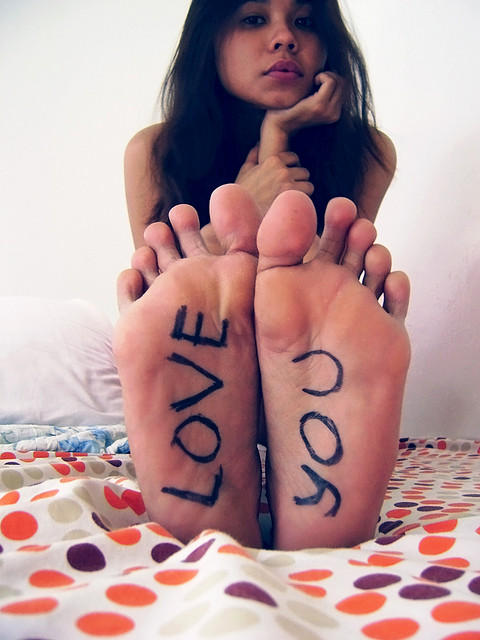I was leading a daylong meditation workshop in Boston. After studying Buddhist teachings and talking about how to apply them to our lives, I encouraged the participants to write down something they were struggling with and submit it anonymously.
We put a dozen slips of paper in a bowl and, one by one, I pulled out these questions and read them aloud for the group to contemplate. And then I came to one that stopped my heart. I’ll never forget the first time I saw it:
“My boyfriend has never said he loves me. I feel unworthy of love. What can I do?”
The group that day had many wise teachings to offer in regards to this situation. But the question haunted me for weeks afterward. I was traveling for one of my books—to meditation centers, yoga communities, universities, bookstores, everywhere. And the more I traveled, the more I heard various forms of this sentiment:
“I don’t think I’ll ever find someone who will love me for me.”
“If I can’t love myself, how can I expect anyone else to?”
“Why am I single? Am I broken?”
In today’s consumer society we are often taught that we are broken. And then there’s the purported good news: there’s something we can buy or achieve that’s external to ourselves that will fix us. Instead of embracing who we are, we give in to societal whispers telling us we’re not good enough, lovable enough, or desirable enough. We are told we need products to scale higher rungs on the career ladder and then, when we attain that particular external factor, we will be happy. We are told we need to be different than who we actually are in this moment in order to free ourselves from this feeling of suffering. That is not the case.
From a Buddhist perspective, here is the real good news: You don’t need anything external to make you more lovable. You are perfect and inherently lovable just as you are.
When the Buddha sat down to meditate under the bodhi tree 2,600 years ago, he didn’t sit down to come up with a master plan to make himself different. He acknowledged he was suffering, and knew that he wanted to do something about that. He engaged in a simple meditation practice to begin to look at that suffering. The more he looked, the more he realized that at his core he wasn’t basically messed up. He was basically good. He was basically awake. And he’s not alone. We are, too. Our wakefulness is indestructible. It is like a diamond in a heap of dust. It is always there. We just need to discover it.
When we talk about the Buddha there is a Sanskrit term that is often used: he is the Tathagata. Tathagata can be translated as Buddha, but more directly as “the Awakened One.” What did the Buddha wake up to? His own indestructible nature. He woke up his mind and heart in a very big way and woke up to reality as it is, as opposed to how he wished it was, or how it used to be. That is what we mean when we talk about meditation practice and attaining enlightenment. We are talking about how we can follow in the Buddha’s footsteps by becoming more present and awake on the meditation seat and the rest of our day-to-day life.
One of the things that the Buddha discovered is that he didn’t have to bullsh*t. He saw reality for what it is, and was able to work with people and situations in a direct and genuine way. He wasn’t a diplomat. He wasn’t a politician. He was a revolutionary in that he presented himself authentically and people responded in kind. Whomever he met was inspired by his presence. Through the simple act of remaining openhearted, he invited people to join him in that space and be openhearted as well. I mention this story because we can do as the Buddha did and present ourselves authentically. In my experience there are three steps to this process:
1. Look at yourself
One of my favorite Tibetan words for “meditation” (there are several) is gom. Gom can also be translated as “familiarity.” It is the notion that through the simple practice of being with the breath and watching your thoughts float across the landscape of your mind you are becoming more familiar with them. The more familiar you become with the various ways you get hooked by emotion, the habitual patterns that keep you running from the present moment, and the nonstop chatter going on in your head, the more familiar you become with the essence of who you are.
2. Discover your basic goodness
When you become familiar with the essence of who you are, you see what the Buddha saw: that beyond whatever layers of confusion and pain that have developed over the years you are innately peaceful. You are inherently wise, good, and strong. That is your true nature, what is referred to within my tradition of Shambhala as “basic goodness.” Basic goodness is the experience that you are primordially whole. That is who you are. And it’s not just you; everyone else possesses this same nature.
3. Develop faith in that goodness
Once you have glimpsed that you are basically good, you should develop faith in that. It’s easy to give in to internal or external whispers that you’re basically not good enough, but if you can experience this sense of primordial wholesomeness, then that can trump whatever gets thrown at you. It’s not an idea, like the idea that you need a new iPad, but an understanding. We can have faith in our experience of basic goodness and continue to cultivate that both on and off the meditation cushion.
The essence of who you are is innately lovable. When we drop the constant critiques that come up throughout our day we experience a sense of peace and warmth. We learn to love ourselves. Most of the time we walk around thinking, I wish I hadn’t said that, or I really need to do that better next time. Rarely do we sit down and appreciate all the good we have done. All too rarely do we celebrate our human potential.
The beauty of the Buddhist meditation practice is that it is a simple tool for doing just that. Yes, we become familiar with both the sanity and insanity that rages in our mind through meditation, but we also get glimpses that we are lovely human beings. We see that we don’t need to rely on a new product or job or even romantic partner to be whole. My Buddhist teacher, Sakyong Mipham Rinpoche, wrote, “True love is the natural energy of our settled mind.” Through training in being with something as simple as the breath, you are learning to settle down with yourself and also training in being with your inherent wakefulness. Within your natural state there is unfathomable love. That is what the Buddha discovered and what you can discover as well.
Adapted from How to Love Yourself (And Sometimes Other People), by Lodro Rinzler & Meggan Watterson, Hay House, September 2015.
~
Relephant:
The Practice of Peaceful Abiding.
~
Author: Lodro Rinzler
Editor: Travis May
Photo: Flickr/Helga Weber



Read 2 comments and reply